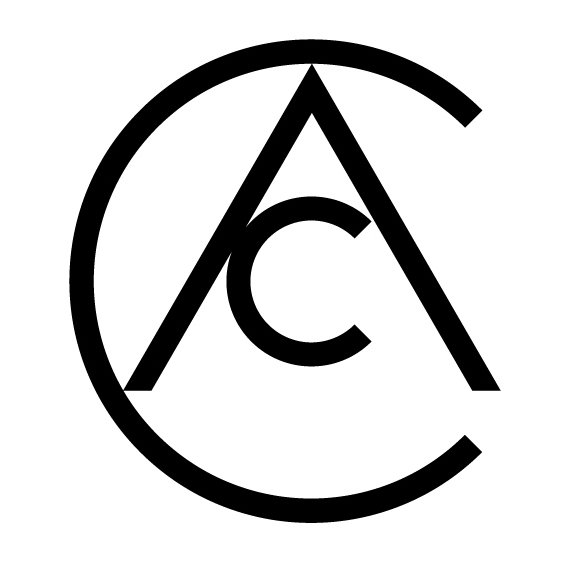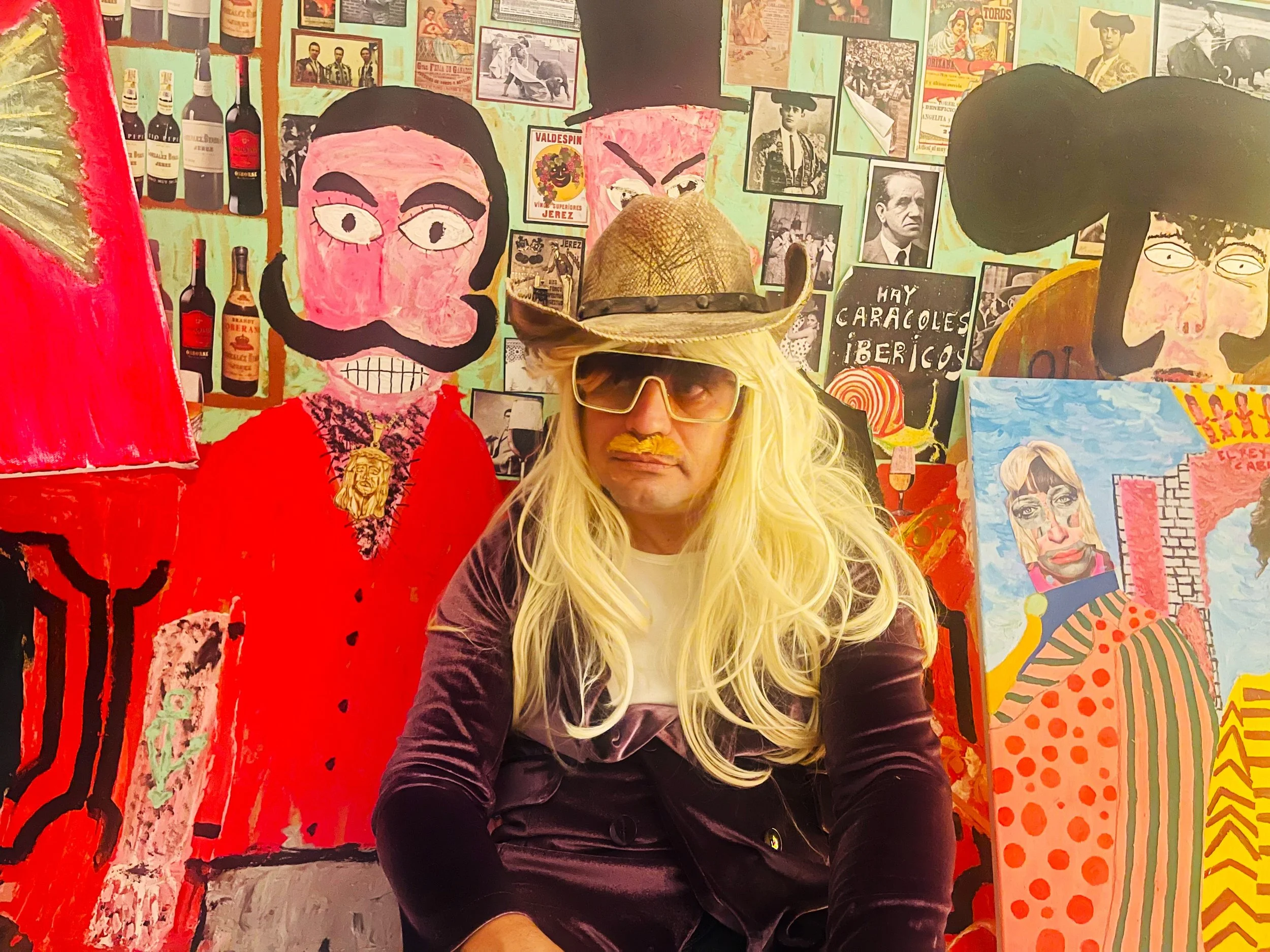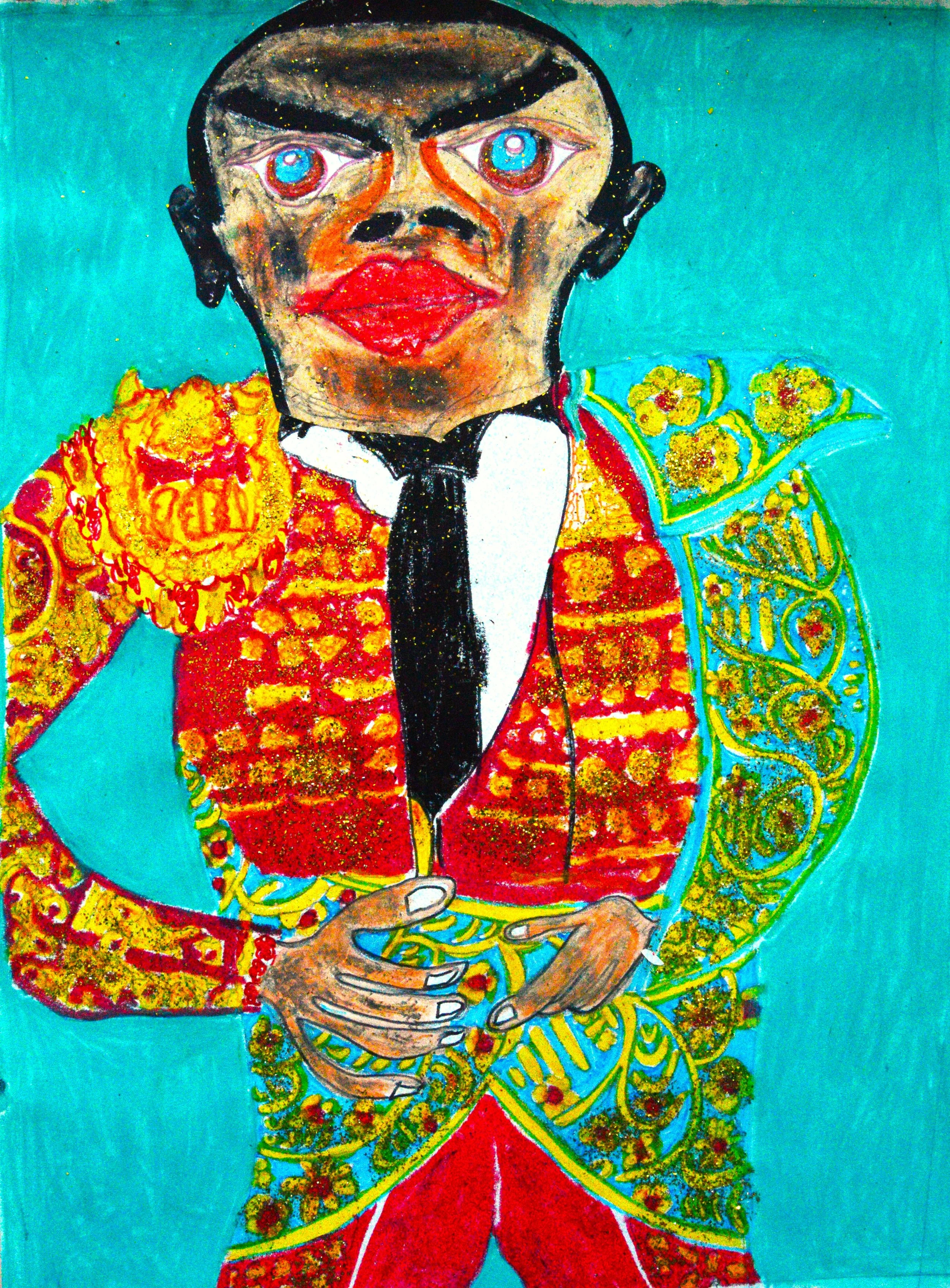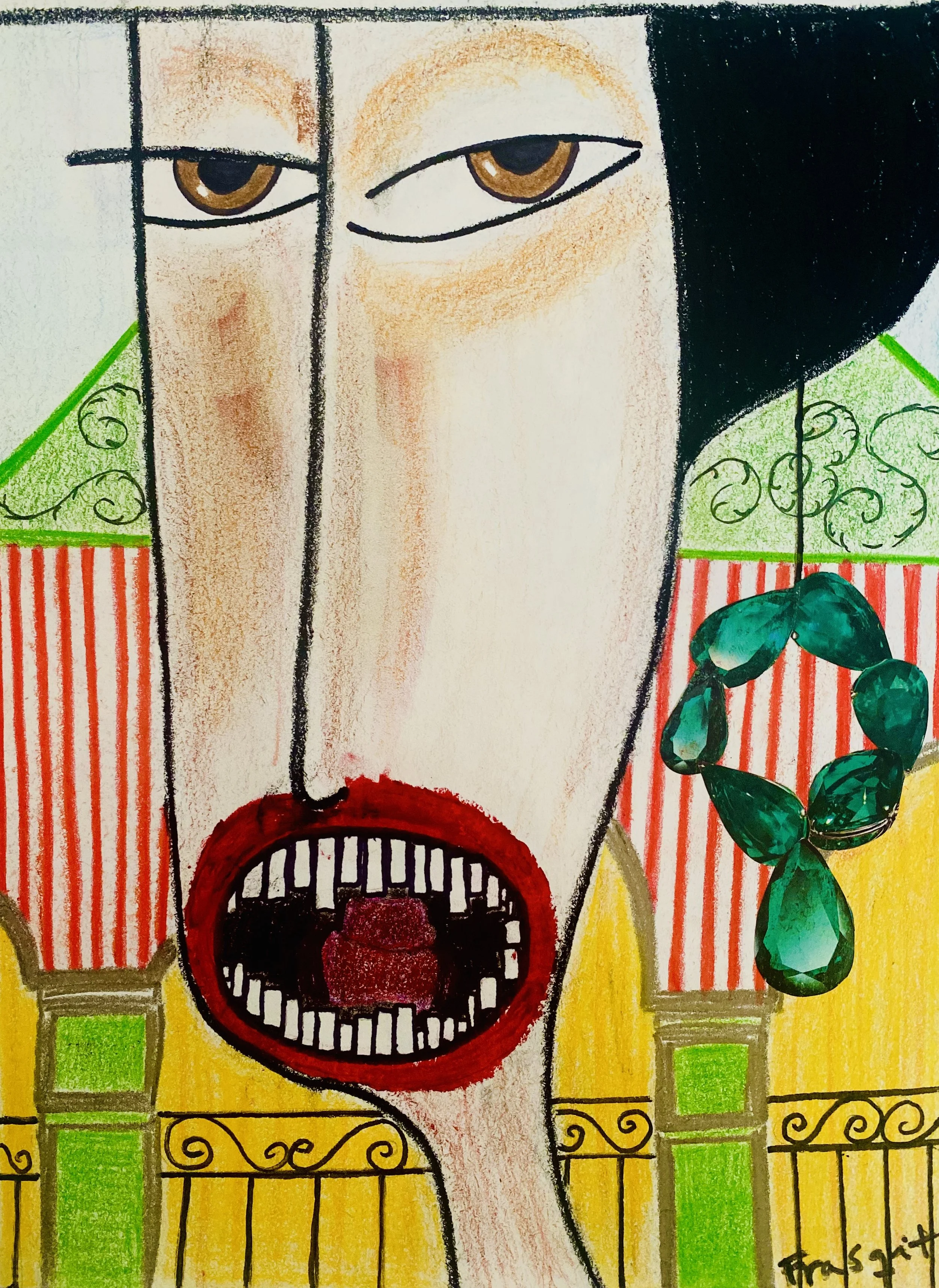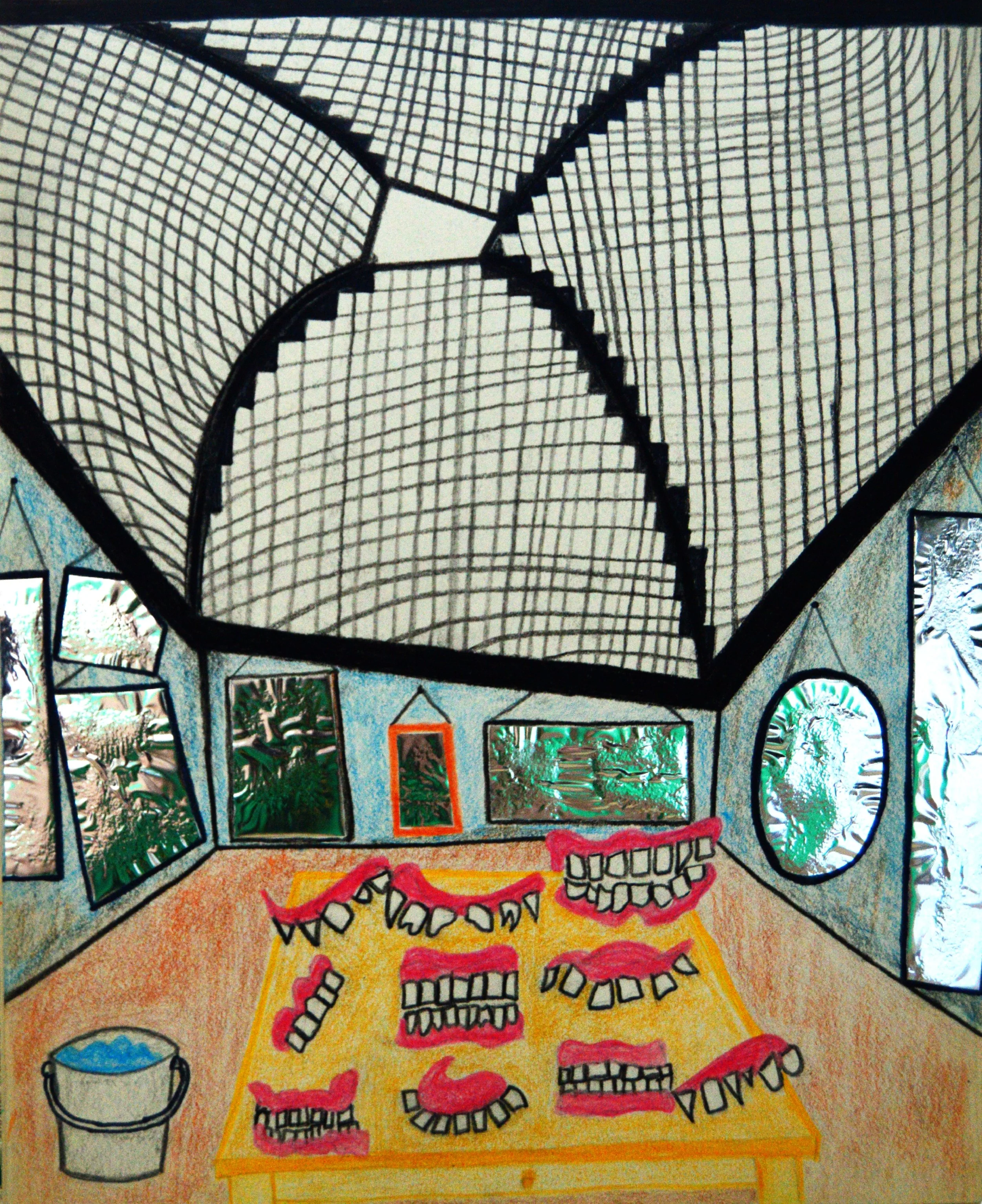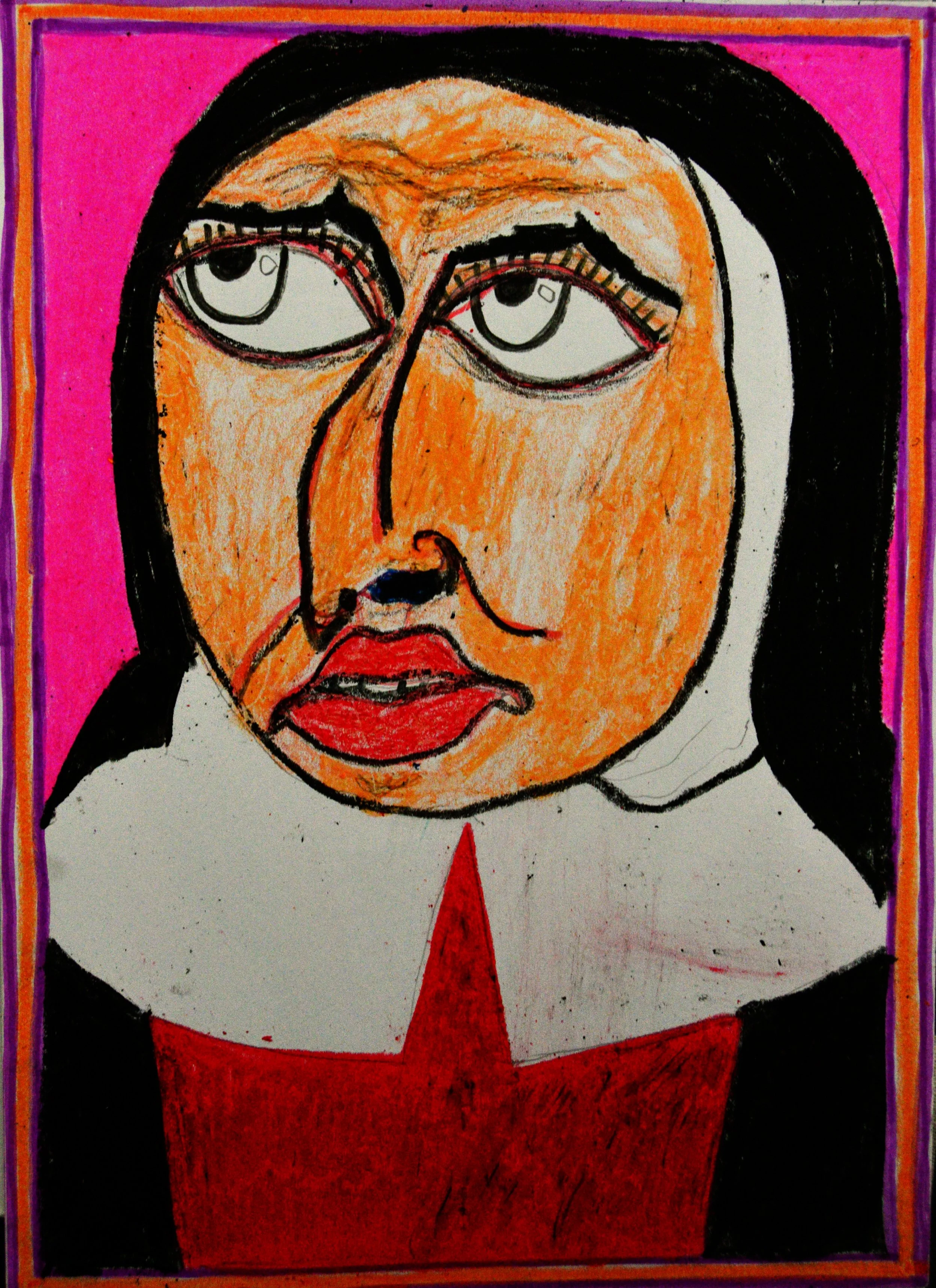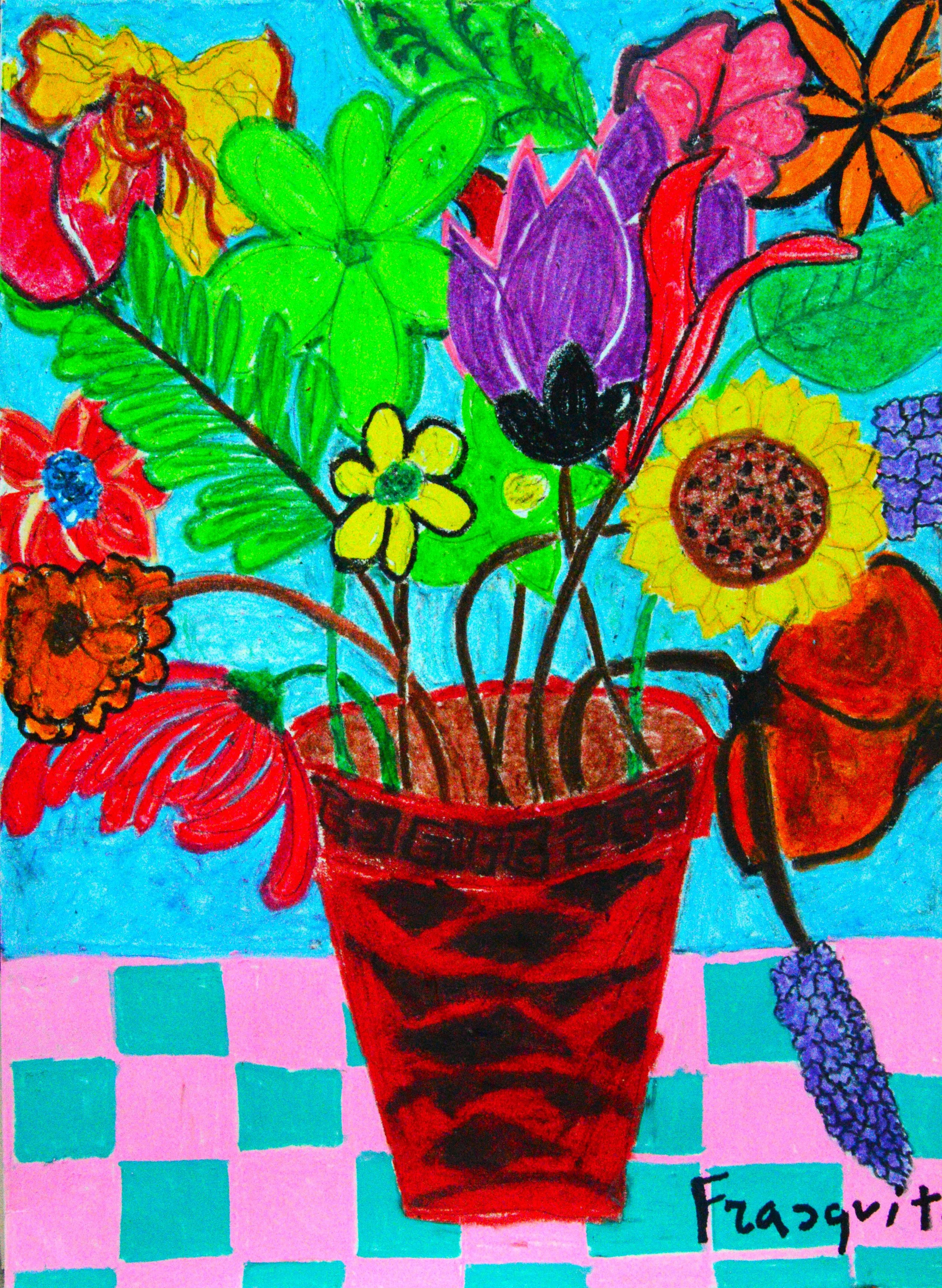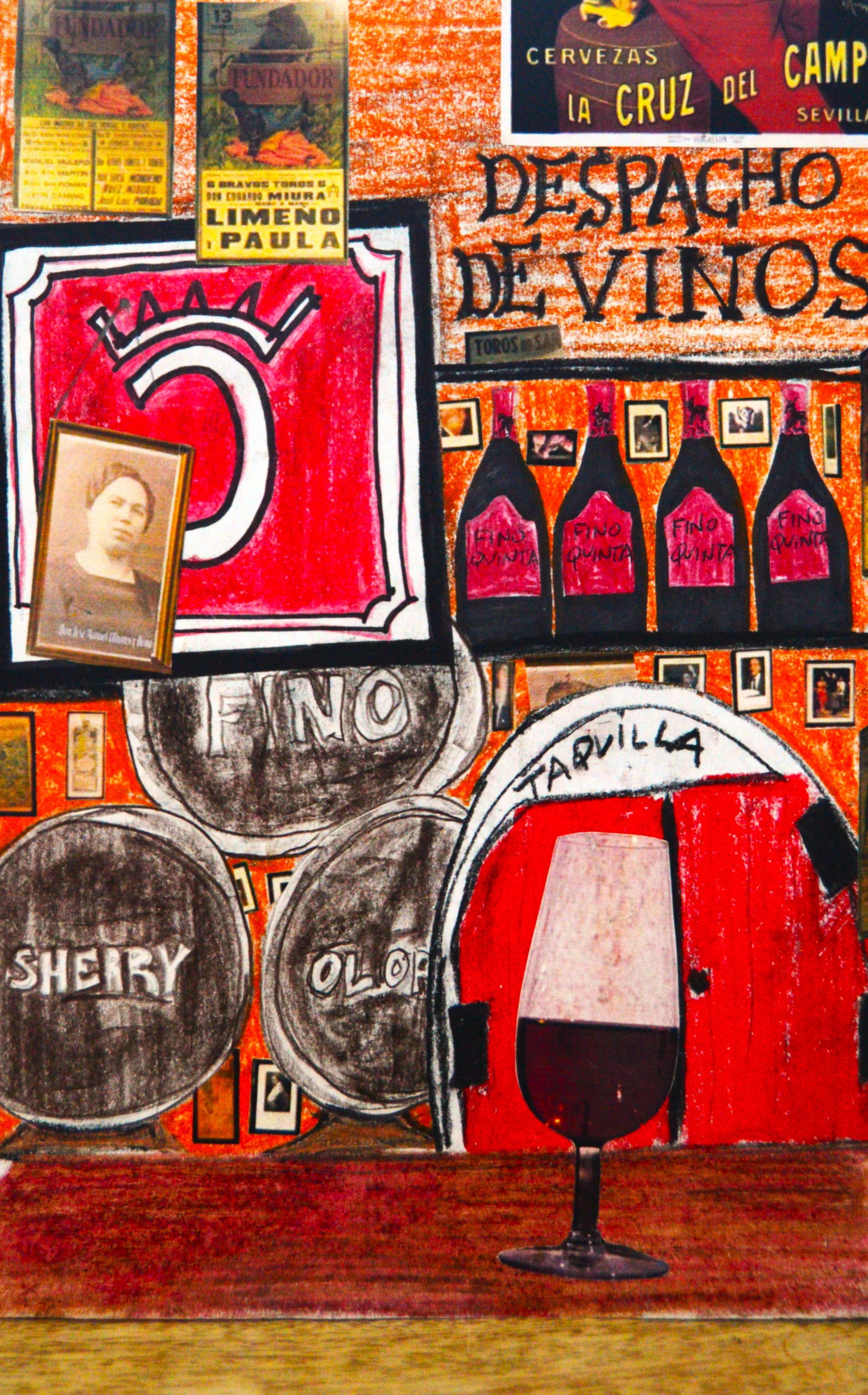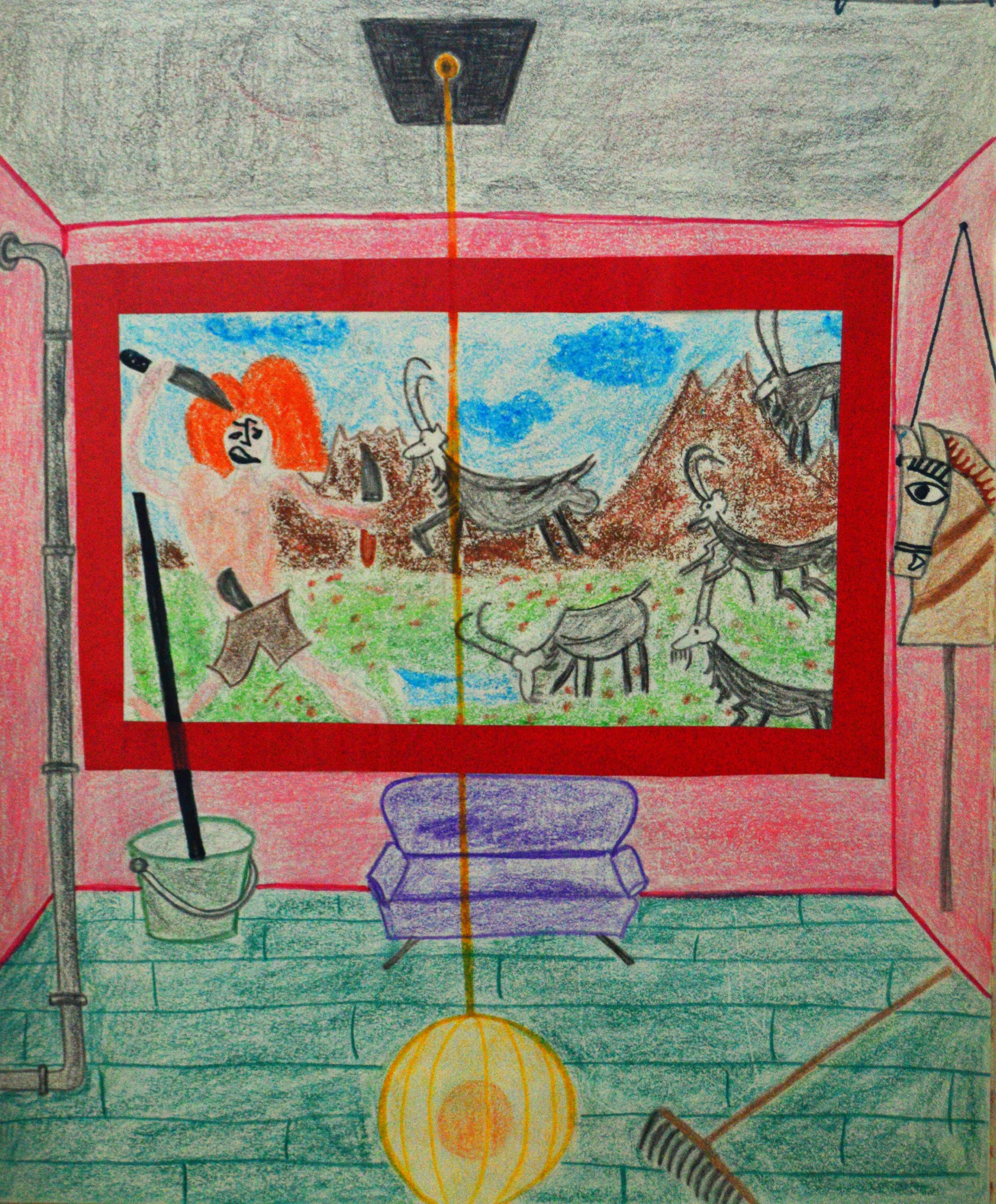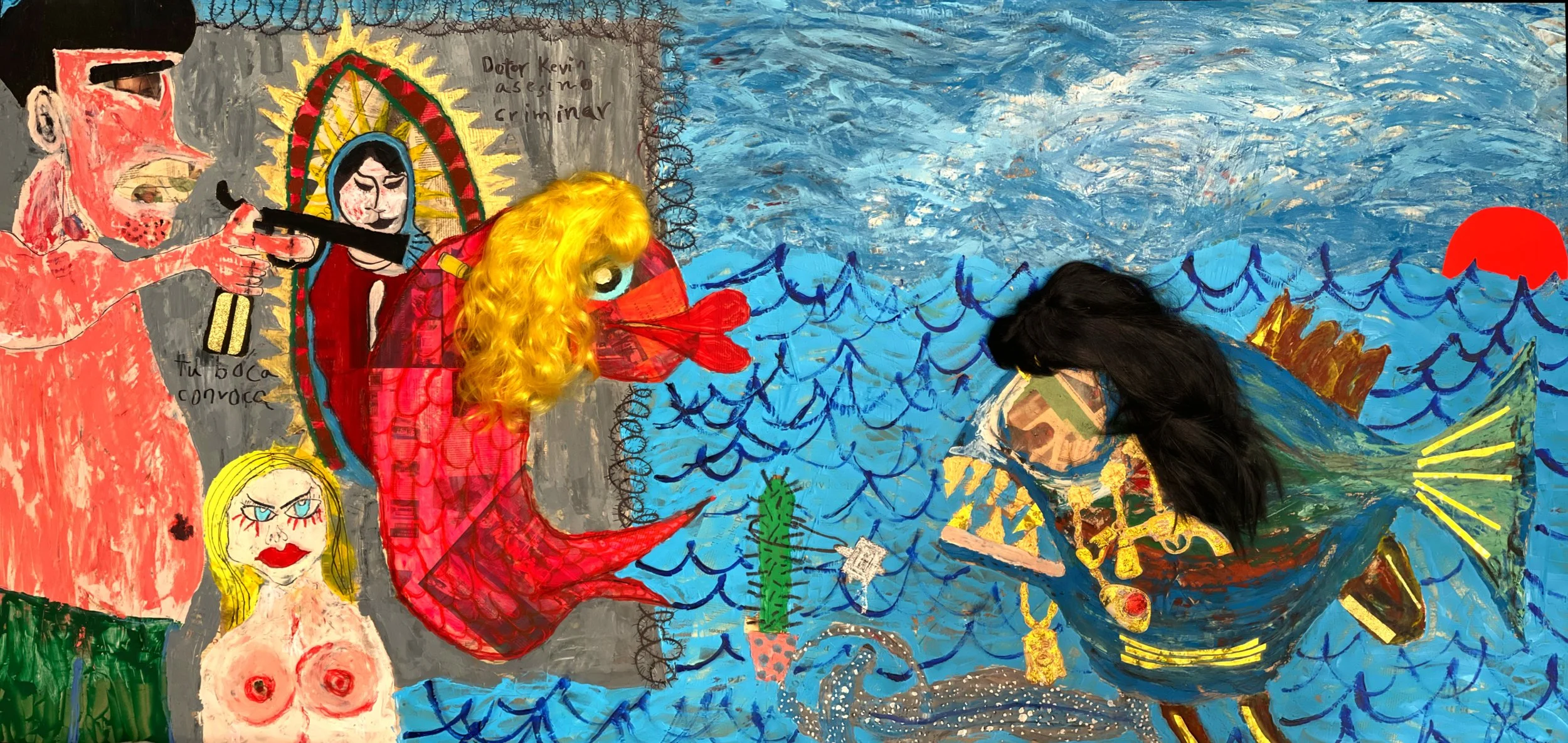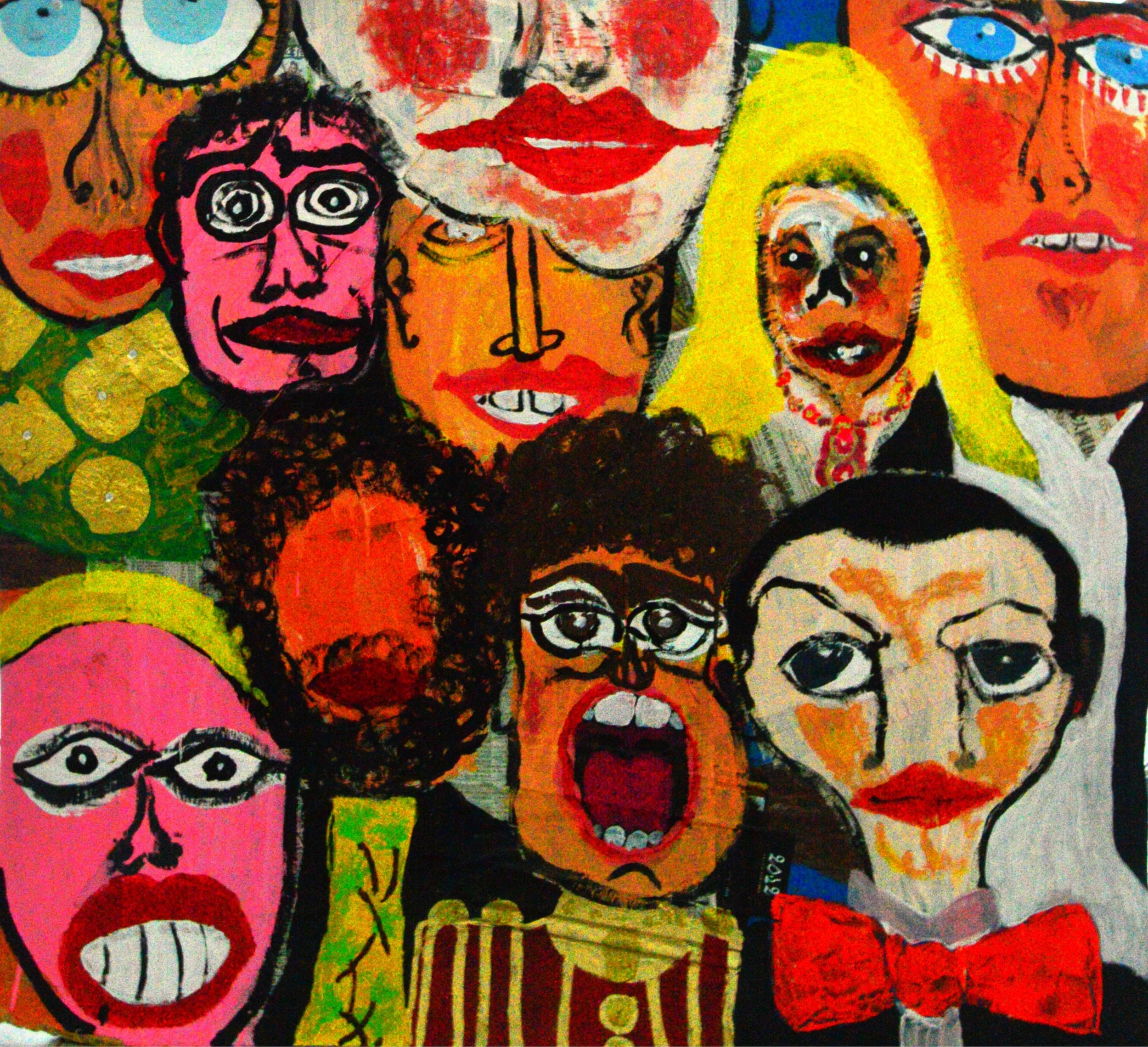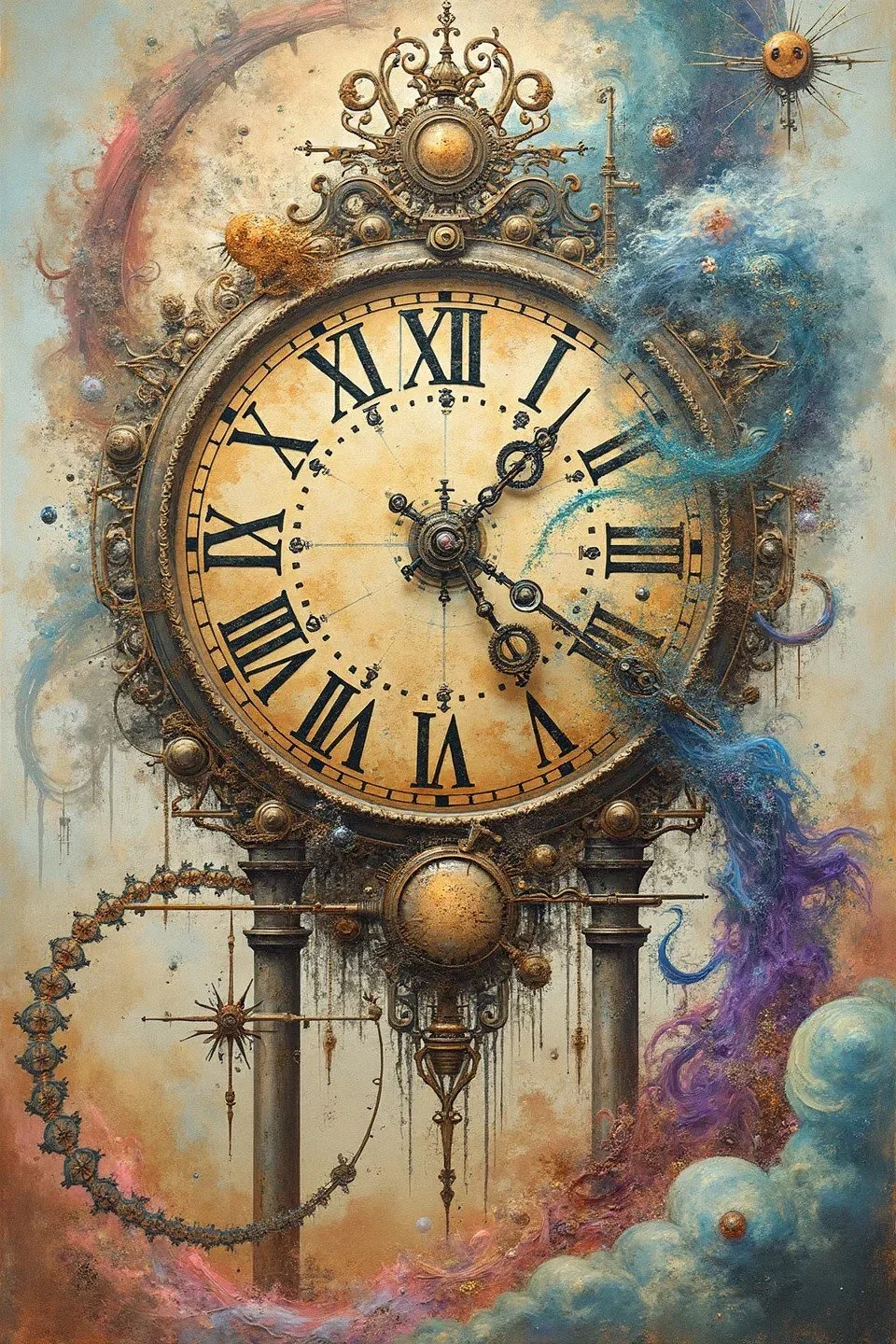Interview with Frasquito Raymond Gil-Urquijo
Frasquito Raymond-Gil Urquijo.
Frasquito Raymond Gil-Urquijo, born in Jerez de la Frontera, is a grotesque, tragicomic, and unapologetically absurd alter ego of his creator—a surreal mix of Andalusian roots, cosmopolitan wanderlust, and obsessive curiosity. His art is naïve, conceptual, and intentionally imperfect: flat perspectives, rudimentary techniques, and unpredictable outcomes give each piece kitsch, personality, and grotesque charm. Inspired by eccentric people, peculiar anecdotes, and the absurdities of life—from Holy Week processions with freshmen balanced on doors, to goat-bleating classmates, to the chaos of global cities—. Frasquito celebrates life, fun, color, and indulgence while embedding a subtle, dark layer of melancholy and reflection on human fragility. He thrives on pushing ideas to extremes, provoking laughter, discomfort, surprise, and thought, often simultaneously, while teaching, questioning, and teasing through history, science, and daily life. Selling globally and increasingly influential, Frasquito is not about commercial success but about connection: making audiences laugh, think, and confront the absurd, reminding us to live intensely, stay curious, and savor the fleeting, fragile moment of existence.
Artist Statement
A crazed dwarf ripping out his chest hair. A beautiful, undressed German baroness watching a Shaolin monk shatter the palace’s ancient vases. A child’s leg adorned with a Lady Chatterley’s gardener image.
I am Frasquito Raymond-Gil, and my art lives somewhere between tragicomedy and operetta—a place where laughter meets reflection and where you may even learn a few wonderfully irrelevant things. I transform everyday stories into grotesque tragedies, guided by a childlike naïveté and an undercurrent of uneasy bitterness.
A relentless traveler, I draw inspiration from any detail or encounter I read about or witness. All these fragments fuse into something deliberately absurd. Influenced by naïve art, Rousseau’s jungles, and Condo’s distorted heads, my style is direct, spontaneous, and raw—defined by rudimentary lines, vibrant colors, and a joyful disregard for perspective or proportion. Collage elements intensify the awkwardness and add a distinctly personal layer to each composition.
With no formal art training—and no desire to acquire one—I prefer to keep my creativity unfiltered and my style instinctive. I have a fondness for charismatic people, gastronomy, goats, and Romina Power. I’m grateful to all the magazines and online platforms that have showcased my work, and to every collector—from Dubai to Hong Kong, Miami to Algeciras, my Spanish hometown—who believed in it.
Your journey into the art world seems unconventional, given your background in physics and engineering. How did this transition to creating art come about, and how has your scientific background influenced your artistic vision and methodology?
I was practically forced into a scientific background as a child—because in my school the “smart kids” studied engineering, and the “not-so-smart ones” studied history. Yet, even after all that, I still haven’t discovered my so-called vocation. Painting and documentary filmmaking are the closest things I’ve found to it, although the latter I haven’t even begun. I’ve always been drawn to naïve art: Condo’s deranged lines, Rousseau’s impossible jungles, rhinos doodled for babies, clay animals that look like they’re about to fall apart.
I think Frasquito was always there, dormant inside me, waiting. He finally burst out in an epiphany after three excruciating hours at the National Gallery of Budapest—which is terrible. Exhausted and hunting for a bar, I stumbled into a tiny hidden room where I was struck like lightning by four tiny drawings from a mediocre Hungarian painter named Gulya Czimra. After that, I spiraled: I spent a month drawing obsessively in Prague, creating the first stories, heavily influenced by those unremarkable yet strangely magnetic drawings.
That said, my background has absolutely zero influence on my creative process or my work. Instead, it’s random, irrelevant, almost ridiculous factors that shape everything: my contradictory, volatile personality that makes me finish ten pieces in a week or abandon another for two years because of a single line I don’t like. Instead of correcting it in two minutes, I get mentally blocked. This literally just happened with a large almost-finished piece about the Strait of Gibraltar—one goat’s leg ended up thicker than it should be, and that was enough to freeze me.
Other influences? Whatever colors, materials or magazines happen to be within arm’s reach. Lately I’m not using glitter simply because the box where I keep it ended up in storage by mistake, and who knows when I’ll pick it up. And then there are the memories—only the ones my brain bothers to keep. I’m fascinated by how relevant anecdotes vanish, while trivial moments or random words stay, mutating into part of the creation.
Frasquito is built from accidents, contradictions, blockages, and nonsense. That’s the method. That’s the work.
You emphasize that your focus is on the idea behind your artwork rather than the technical execution. How do you balance the imperfection of your drawings with the need to effectively communicate the surreal stories and emotions of Frasquito?
My art is both naïve and conceptual. I want to show an idea, and I couldn’t care less about perfect execution. I ignore size, form, perspective—hence why so many of my works look flat or two-dimensional. My technique is deliberately rudimentary and childlike, and I never sketch beforehand.
My lack of natural “talent,” combined with the materials I use, gives the work a raw personality—authentic, kitsch, grotesque—without me ever planning it. I’m self-taught, and I prefer to stay that way so technical rules don’t strangle my creativity. Because I don’t know the “proper” way to do things, what I imagine and what I actually produce are never the same. That unpredictability shapes the final piece.
Your art draws inspiration from "wherever, whoever, and whatever," particularly the ridiculous or uncommon. Could you share a specific instance where a seemingly trivial or absurd idea blossomed into a meaningful Frasquito piece?
My inspiration comes directly from my own life and the eccentric situations I’ve had the misfortune—or privilege—to experience. Frasquito is a volatile mix of my deep Andalusian roots and a cosmopolitan twist from constant travel. Think of it as crossing Aunt Anica La Piriñaca with Alan Hess, the father of Palm Springs. An unlikely cocktail, but a very explosive one.
Anything can spark a piece: a scene from a TV series, a single word in a novel, an anecdote, a photograph—usually from those weekend newspaper magazines—an online post, a trip, or simply a fleeting thought about something I love or despise. My works are the direct byproduct of daily life, curiosity, and the absurd theater of existence. Sometimes a theme grabs Frasquito by the throat—he squeezes it obsessively for a few days and then abandons it forever.
Some ideas ripen instantly because the ridiculous element is so clear that the drawing erupts without hesitation. A perfect example is my obsession with Popes. The figure of the pontiff and the theatricality of papal conclaves have always fascinated me—the secrecy, the protocol, the miters gliding through shadowy corridors.
I’m equally haunted by the story of the Palmarian Christian Church of the Carmelites of the Holy Face—an unbelievable, surreal story where a Sevillian electrician, Clemente Rodríguez Gómez, was ordained a bishop. After the death of Pius XII, he split from the Catholic Church and proclaimed himself Pope Gregory XIV, attracting money and followers from around the world to El Palmar de Troya, a tiny village outside Seville.
My favorite pope, however, is Alexander VI—the first Spanish pope, born Rodrigo Borgia. And then there’s Don Cosme “El Chano,” who every April 14th parades through El Puerto de Santa María dressed as the Pope to celebrate the birth of Alexander VI, wearing handmade miters created by his son, “El Feto.”
Don Cosme’s end was as bizarre as his life: found in a ditch on the Cádiz–Seville road, stuffed in a garbage bag, hands tied, in an advanced state of decomposition, with clear signs of sexual assault. Apparently he had swindled an Eastern European mafia ring by selling them fake fossils. Reality, as always, is stranger than anything Frasquito could invent.
Another example is the suppository. It was born from a joke told by a famous Andalusian comedian. That joke pushed me into researching suppositories, which led to the delightful discovery that the Romans invented them—and that 95% of conical suppositories (not the ovoid ones) are inserted incorrectly. Most people push in the pointed end first, when the design actually works the other way around: the rounded end goes in first, and the pointed end creates the suction needed once it’s already inside.
It’s exactly the kind of absurd, overlooked detail that Frasquito adores—ridiculous, anatomical, historical, and deeply human.
Andalusia and Florida are central to Frasquito’s character and story. How do these locations shape the themes, colors, and narratives of your artwork? Are there other places that have left an indelible mark on your creativity?
Frasquito was born in Jerez de la Frontera. He is a practicing Andalusian and a compulsive traveller who roamed the world at a time when traveling was still unusual—a kind of Spanish George Bradshaw, only without the guidebook (the artist highly recommends Great British Railway Journeys, where the splendid Michael Portillo retraces Bradshaw’s routes through the UK and Europe).
I’m drawn to eccentric people, eloquent talkers, master storytellers, and peculiar situations—anything that makes me laugh. Andalucía and Cádiz are an endless reservoir of anecdotes; it’s in our DNA to laugh at everything, and the percentage of peculiar, hilarious characters is unmatched anywhere else in the world.
I remember Andalusian stories that today would be considered unacceptable—if not borderline criminal. Like the incessant bomb threats in high school during exam days, phoned in from street booths by students who hadn’t studied. Or the improvised Holy Week processions that paraded through the school corridors, with two terrified freshmen—“Christ and the Virgin”—standing on top of ripped-off doors, carried with full protocol and solemnity. I can still see the face of the saetero, completely possessed, shredding his throat as he sang to that poor boy balancing on a door, while hundreds watched in reverent silence before erupting into applause. Things like this simply don’t happen anywhere else.
There was also a classmate in our final year who could imitate a goat perfectly—demonic, flawless bleats delivered in different tones according to his mood. He would answer questions with bleats, disrupt lessons with bleats, and unleash enormous bleats during moments of chaos. And the legendary traffic jams returning from the beach: we would escape them by waving a white handkerchief out the window, pretending we were transporting a wounded man to the hospital, overtaking at full speed. Pure Andalusian theater.
I’ve never lived in Florida, but I’m fascinated by it—the collision of concrete and jungle, Latin bloodlines, the raging sea, the chaotic mixture of sophistication and chaos. Miami or Southeast Asia inspire me in the same way: gigantic cities devouring tropical forests, torrential rains pounding glass towers, palm trees wrestling with the wind. Is simply fascinating having a coffee by the sea feeling the sea breeze, witness how quick the dark clouds are moving, and calculating how long the storm will take to cross from one side of the city to the other, and I’m an avid follower of live hurricane coverage on TV.
These places are central in my work—Florida, Andalucía, Cádiz—but also Mexico, Texas, and other landscapes. Yet the real fuel is not geography; it’s the anecdotes I’ve lived and the strange characters I’ve encountered along the way. That is where Frasquito breathes.
Humor and irony are recurring elements in your work. How do you navigate the challenge of making art that entertains while also provoking deeper reflection in the viewer?
My ultimate goal is to push ideas to the absurd with a grotesque twist—entertainment is merely a by-product. Frasquito is not irony; it is tragicomedy, operetta, and a subtle message of pessimism. Most stories end badly, yet no one despairs—everyone keeps laughing. Humor often arises from misfortune, provoking uneasy laughter that the viewer almost wants to suppress. This reflects my personality: I laugh at what shouldn’t be funny. Tragicomedy is profoundly Spanish, profoundly Andalusian; we laugh at drama. Frasquito may appear lighthearted, but many situations carry a hidden layer of sadness, a key element of his message. He celebrates life, pleasure, and savoir faire, always with a thin veil of melancholy. Some works also have an educational impulse—whether it’s the physics of an Andalusian botijo, the life of Rafael Guastavino, the Tartessian civilization of Southern Andalusia, the origins of California wine, or the morphology of Florida goats.
Your artistic process is described as anarchic, with no constraints on how Frasquito’s story unfolds. How do you ensure coherence or a sense of continuity in your work, or is the unpredictability part of the message you aim to convey?
My ultimate goal is to present an idea and push it into the realm of the absurd with a grotesque twist. Entertainment is a by-product, never the purpose. Frasquito is not irony—it’s tragicomedy and operetta. Beneath it all lies a message of pessimism. Things end badly in most of my stories, yet no one seems to fall into despair; on the contrary, everyone keeps laughing.
Much of Frasquito’s humour is built on misfortune. The viewer often laughs with a sense of discomfort, trying to suppress the impulse. That tension is essential. It reflects my personality—I’m the type who laughs at things that have no business being funny. Tragicomedy is also deeply Spanish and profoundly Andalusian: we laugh at drama, we celebrate catastrophe.
Frasquito may appear cheerful at first glance, but many scenes carry an undercurrent of sadness for those willing to look closely. That’s where I believe the key to Frasquito lies: a celebration of life, pleasure, and savoir faire, always wrapped in a thin layer of melancholy and pessimism.
Other works have an educational impulse—more or less absurd, but always sincere. I enjoy teaching. Anything can become a lesson: the physics of an Andalusian botijo, the life of Rafael Guastavino, the Tartessian civilization of Southern Andalusia, the origins of Californian wine, or the morphology of Florida goats.
Frasquito’s life and personality seem deeply intertwined with your own experiences and passions. To what extent do you view him as a fictional alter ego, and how do you separate—or blend—your personal identity with his fictional narrative?
This is a great question—thank you for asking. Undoubtedly, Frasquito’s stories carry my tastes, concerns, and experiences. Most of the locations are places I’ve travelled to or lived in. Frasquito shares more with me, his father and creator, than he differs. We both love traveling, gastronomy, Florida, Andalusia, gourmet canned food, goats, and flamenco. He’s a patchwork of experiences and anything I see or read that catches my attention.
That said, his behavior and personality don’t perfectly mirror mine, though we share obsessions like adoration for Romina Power. Other works are entirely fictional. Signing as Frasquito gives me independence, but he is not an alter ego I use to say things my “real” self wouldn’t. If anything, the real Frasquito is probably more arrogant and self-important than the artistic Frasquito, who is far more creative than his original. The artist is more restrained than the father—a curious, disciplined, and slightly mischievous version of me.
Your work has been exhibited and sold internationally, from South America to Europe and Asia. How do you measure success as an artist, and what impact has this recognition had on your creative approach?
I’m fortunate to have my works in places I love around the globe: Dubai, Miami, New York, Milan, Geneva, Hong Kong, Dallas, Austin, Los Angeles, Bogotá—and of course, Algeciras, where I was born. I’m deeply grateful to everyone who stops to follow Frasquito and take an interest in his work, especially my devoted “palmeros,” who have supported me unconditionally since the beginning and embrace everything I do.
I’m also grateful to the magazines and media that have featured my work, such as Les Couleurs Miami Beach Magazine and 128LIT, a cultural magazine founded in New York and awarded the “CLMP Best Debut/Magazine Award” in 2023. I like to mention my first two publications: the art and travel magazine Revista en Perspectiva, where classic masters are explained in depth, and where Frasquito was the first amateur artist ever portrayed (“The Story of Frasquito Raymond-Gil Urquijo—and His Father—Told in Five Acts”); and Wild Things Zine (“The Incredible World of the Frasquito Family”), one of the most faithful portraits of the author ever made.
I’m also grateful to the patient clients currently awaiting commissions—some for nearly three years—but this is part of my creative process, part of how I operate.
That said, answering your question honestly: I feel I haven’t done anything truly remarkable yet. Exhibiting or selling my work doesn’t impact my creative process. I never create with the audience in mind, nor to make something commercially “appropriate.” For me, success is far simpler—and far more meaningful: it’s that my work reaches people from different backgrounds and sensibilities, that it entertains, surprises, or unsettles them, and that it sparks unexpected reactions—joy, curiosity, discomfort, laughter—and that these moments are shared with me, the author.
Where do you see the Frasquito series evolving in the coming years? Are there new themes, formats, or mediums you hope to explore, or even entirely different artistic projects you wish to pursue?
I’m currently finishing the first book on the story of Frasquito, with part of the proceeds going to community kitchens in my hometown. To grow, I’m looking for an agent to help develop the commercial side of my work. I also hope to organize my first solo exhibition in a city and venue that truly excite me. So far, I’ve declined every offer because none have ignited that spark.
Other ongoing projects include a collaboration with the first product line inspired by the scents of Sotogrande, which is beginning its international expansion (@maison.soto), and a series for the prestigious Association of Friends of History, exploring Spanish heritage in the U.S.
Meanwhile, a short documentary about Frasquito’s life and work is being scripted—a project I’m extremely excited about—but it will only see the light of day if it captures the surrealism and tragicomedy that define Frasquito.
Looking ahead, I might weave opera into Frasquito’s central narrative, a passion I discovered a few years ago in Central Europe. In terms of format, I don’t expect major changes: I may start painting on fabric instead of canvas or wood, in larger dimensions like my successful 240×120 cm or 120×120 cm works. I will continue with mixed media, drawings, and collages on A3 and A4 paper, which remain the core of my practice.
Frasquito celebrates surreal life, lifestyle, and colors with an overarching theme of fun and spontaneity. What role does your personal philosophy about life play in shaping your artistic narrative, and what message do you hope your audience takes away from your work?
This is one of the moments where my real self and my alter ego converge. The series speaks in a surreal tone, celebrating life, fun, colors, lifestyle—and, of course, Andalusia. As I’ve said before, for me, success is that my message reaches people around the world, entertains them, and provokes unexpected reactions—laughter, surprise, or a hint of discomfort. I also want the tragicomic layer to make people think, nudging them out of their comfort zone.
The bottom line of Frasquito’s message is simple: live intensely, stay curious, learn, eat well, and enjoy the moment. Because life is fragile—if pancreatic cancer comes knocking, everything can end in two days.
Join me on Instagram: @frasquitoraymondgil
“Cosme Toribio Raymond-Gil, my uncle, known as Cosme Cadbury, as he married Gwendoline Cadbury, a relative of the chocolate makers. Bullfighter, olive oil maker, breader of fighting cocks and owner of the Cabra del Santo Cristo tavern, in the Sierra Magina in Jaen, where he was born in 1911”. Exhibited in Hong-Kong.
The new dentures of my cousin Adela la de Carmona", selected for the international exhibition Love your body – we need different eyes, held in Milán (2020)
“The bath is ready Don Frasquito”. Somewhere in Key West.
“Why Frasquito?” Sevilla.
“Bogavante”
“Don Frasquito’s denture gallery”. Don Frasquito’s home. Coral Gables. Miami.
“My great-grandmother, the disgraced Mrs. Ambrosia Víbora Padilla, spent 778 days in vow of silence at the ancient church, nunnery, and school of Our Sisters of the Company of Sancti Leandra and Spiritus Sanctus in Lebrija, Seville. She slept on a cold stone bed on the floor during this time, living a life of solitude and suffering. Eleven days before a tragedy would shatter her life and forever alter our family's history, an assault took place at the nunnery on August 27, 1832. That day, the nunnery was raided, and the 15 nuns who lived there were subjected to a horrific violation. Among the attackers, one left Ambrosia pregnant with what would be her only son, my grandfather, Don Rómulo Raymond-Gil Culebras. That event marks the beginning of my family's story. Ambrosia remained silent, as per her vow, until a year later, on the first anniversary of the tragedy, August 27, 1823. On that day, deeply traumatized and filled with sorrow, she finally responded to our Lord's call”.
“Flowers”
“Frasquito here you have the last one today”. Tabanco de Pepe el Momia, Jerez de la Frontera.
The Greek geographer Strabo did the very first mention to Sherry wines in the 1st Century BC, writing that the wine-making was brought to the Jerez area by the Phoenicians in 1100 BC.
Moors added distillation to produce brandy, the 2nd Cordoba caliph tried to destroy the vineyards, keeping the raisins to feed the empire, and in the 16th century already had the reputation of the world’s finest wine.
Sherries are made in the white typical albarizas of Jerez de la Frontera, Cadiz, as a result of this region’s limestone-rich, chalky soil, mostly from palomino grape, one of the only three varieties than survived to the phylloxera infestation in 1894 and an unique vinification process, where is essential the “flor”, mildew-like yeasts fostered by a slight exposure to air after fermentation giving the nutty flavor.
Ranging from the paler and driers finos or manzanillas from palomino grape, to darker and heavier ones like Amontillado, Oloroso or Pedro Ximenez, oxidised as they age in barrel from Pedro Ximenez sweeter grapes. All are fortified after fermentation with high brandies, to 16–18 % alcohol.
Solera is the process to blending wines from several vintages, from three to eight tiers of barrels in which sherries of various ages, with the oldest on the bottom that is replaced with younger ones from the next tier.
Columbus brought sherry on his first voyage to the New World, Magellan spent more on sherry than on weapons for his sailing around the world. Became very popular in England after Francis Drake sacked Cadiz in 1587 taking 2,900 Sherry barrels. Shakespeare, Perez Galdos or Allan Poe wrote about it and James Bond sampled a glass in Diamonds are foverer…
“Why are you going to kill five goats”. Artwork in Mr Frasquito’s residence. Mairena del Alcor. Sevilla.
Chicho’s weddings: Frasquita’s death
“Chicho and his cousin Dmitry left the Romanian Carpathians. In Corsica stole a 35-carat ruby, and as they went through Vejer de la Frontera picked up a typical local saguaro called chumbo. At the dock of the Illustrious, Heroic and Generous city of Alvarado-Veracruz, Altagracia Coronel de la Garza awaits him, a mixture of red mullet and monkfish. She has just received two bullets directed at her head, from her fiancé Chuy Vicente Flores Reyna. He found her after an agonizing two weeks’ search, from Acapulco-Guerrero to Lázaro Cárdenas, where she was last seen partying with Aneska Ambrosio -Papon, humble lamb of God. Frasquito Raymond-Gil”. 240x120 cm. Mixed media on wood. 2022.
“Zhou Xinfang”.
This artwork features three layers of Asian newspapers, travel guides, and faux currency collected during Frasquito’s stay in Hong Kong. He was inspired by different elements of his trip, as Mr. Michael Chow’s life documentary, ultra-modern book stores across the city or the very old Chinese traditions of burning money as offering to Gods. It captures the vibrant energy of the beginning of the day, merging his traditional Andalusian roots with the super cosmopolitan and fancy Hong-Kong St. Regis vibe. A flamenco group arriving at dawn to the grand atrium, where they extend the long night party out enjoying Sherry drinks and Asian tapas. The lively scene shows the flamenco crew in the Hong Kong opera watching Turandot. The artwork presents a whimsical blend of cultural elements, from their dramatic applause of an audience to the humorous antics of operatic characters, who most probably are lost in the princess’ story. In this piece, Frasquito masterfully intertwines his experiences, creating a colorful labyrinth of imagination that reflects his unforgettable stay at The St. Regis. 136cm x 124cm. Oil, acrylic, and mixed media on plywood.
“Blue-eyed monkey and umbrella in Mr. Frasquito’s dinning room”. Coral Gables. Florida.
“Frasquito we have to go to Borego springs, she’s not here either”. – “Borego no, BORREGO carajo!”. Los Palacios. Texas.
